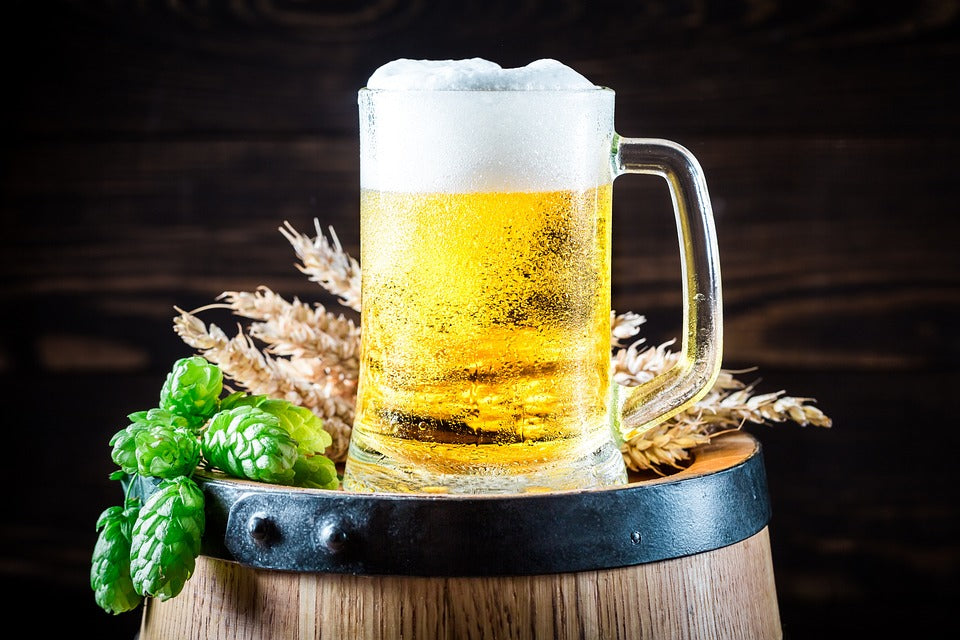
The Impact of Temperature on Beer Storage: What Every Beer Drinker Should Know
Temperature is one of the most important factors to consider when storing beer. The ideal temperature range for storing beer is between 32-40 degrees Fahrenheit (0-4 degrees Celsius). If the temperature is too high, the beer can become skunky or develop off-flavors, while if the temperature is too low, the beer will lose its carbonation and become flat.
Excessive heat is the most common enemy of beer. High temperatures can cause the hops in the beer to break down, resulting in a skunky taste and smell. This is due to the presence of a chemical compound called isohumulones, which are found in hops and are sensitive to light. When exposed to light, these compounds react to form skunky-smelling compounds called mercaptans. This is why skunked beer is often described as having a "light-struck" flavor. To avoid the heat from getting to the beer people usually invest in beverage coolers to store the beer or wine in a temperature regulated environment.
In addition, high temperatures can also cause the beer to lose its carbonation. Yeast, which is responsible for the carbonation in beer, becomes less active at higher temperatures, resulting in a less effervescent beer. This can cause the beer to spoil, resulting in off-flavors such as sourness or staleness.
On the other hand, storing beer at too low of a temperature can also have negative effects. Beer stored at temperatures below freezing will become slushy and lose its carbonation, while beer stored at temperatures just above freezing can become flat. In addition, storing beer at temperatures below 32 degrees Fahrenheit (0 degrees Celsius) can cause the beer to become cloudy and hazy, as the cold temperatures cause the proteins in the beer to coagulate.
It is important to note that not all beers are created equal when it comes to temperature sensitivity. Lighter beers, such as lagers and pilsners, are more sensitive to temperature fluctuations than darker beers, such as stouts and porters. This is because the darker malts used in these beers provide a greater level of insulation against temperature changes. If you are a beer drinker, it is important to pay attention to the storage conditions of the beer you purchase and to store it in a cool, dark place away from light. Remember, a little care and attention to temperature can make a big difference in the taste and enjoyment of your beer.
The Advantages of Investing in a Dual-temperature Beer Fridge
A dual-temperature beer fridge is a specialized refrigerator that allows you to store different types of beer at different temperatures. These fridges typically have two separate compartments, each with its own temperature control, which allows you to store lagers at a cooler temperature while keeping ales at a slightly warmer temperature.
Pros
-
Optimal temperature
One of the main benefits of investing in a dual-temperature beer fridge is the ability to store different types of beer at the optimal temperature for each one. Lagers, for example, are best stored at a temperature between 32-40 degrees Fahrenheit (0-4 degrees Celsius) while ales are best stored at a slightly warmer temperature between 45-55 degrees Fahrenheit (7-13 degrees Celsius). By having a dual-temperature fridge, you can ensure that each type of beer is stored at the ideal temperature, which will help to preserve the flavor and aroma of the beer.
-
Separate Compartments
Another benefit of a dual-temperature beer fridge is the ability to store different types of beer separately. This can be useful if you have guests who prefer different types of beer, or if you want to keep certain types of beer separate from others for personal preference. By having separate compartments, you can ensure that each type of beer is stored in an optimal environment and that the flavors of one type of beer do not affect another.
-
Style
Dual-temperature beer fridges are often designed with style in mind. They can be an attractive addition to any home bar, game room, or man cave. They can also be a conversation starter and a great way to show off your beer collection.
-
Convenience
Dual-temperature beer fridges offer a great convenience as you no longer have to transfer your beer from one refrigerator to another to achieve the optimal temperature. It also eliminates the need to have multiple fridges for different types of beer, saving you space and money.
Investing in a dual-temperature beer fridge can be a great option for beer enthusiasts who want to store different types of beer at the optimal temperature for each one. However, it is important to consider the cost and space requirements of these fridges before making a purchase. If you're a serious beer drinker and you're looking to improve your beer storage game, a dual-temperature beer fridge is definitely worth considering.
The Future of Temperature Control in Wine and Beer
Temperature control is an essential aspect of wine and beer storage, brewing, and serving. With the advancements in technology, the future of temperature control in wine and beer is looking more innovative and efficient. Here are some of the key trends and innovations in temperature management for wine and beverage coolers.
Smart technology: Smart temperature control systems are becoming increasingly popular in wine and beer storage. These systems allow users to remotely monitor and adjust the temperature of their wine and beer storage units through a smartphone app. This not only makes it easier to keep wine and beer at the perfect temperature, but it also eliminates the need for manual adjustments.
Advanced cooling systems: New cooling technologies are being developed that can cool wine and beer more efficiently and effectively. These include the use of thermoelectric cooling systems, which are more energy-efficient than traditional refrigeration systems.
Climate-controlled storage: Climate-controlled wine and beer storage units are becoming more prevalent. These units not only control the temperature, but also humidity and light levels to provide the optimal environment for wine and beer storage.
Portable and compact temperature control systems: With the increasing popularity of wine and beer in outdoor settings, portable and compact temperature control systems are becoming more in demand. These systems are designed to be easy to transport and set up, and can keep wine and beer at the perfect temperature in any setting.
Artificial Intelligence: Artificial Intelligence is also being used to optimize the temperature control process. AI algorithms can make decisions based on the data collected by the system, thus reducing the need for human intervention and allowing for more precise temperature control.
The future of temperature control in wine and beer is becoming more innovative and efficient and as the technology continues to evolve, we can expect to see more advanced and sophisticated temperature control systems in the future.








